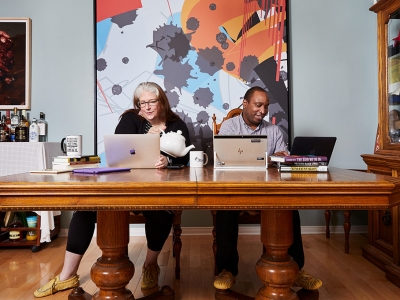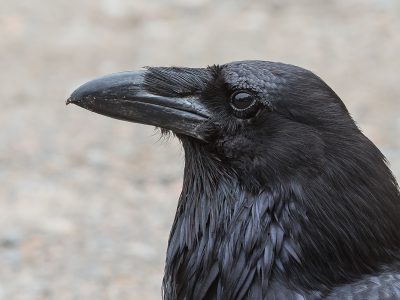By Lisa Gregoire
Photos by Fangliang Xu
Shelby Lisk, a reporter based at Carleton through a new partnership with TVO to create an Indigenous Hub on campus, started her job three weeks before last fall’s federal election. Naturally, her first story for the provincial media organization was about why Indigenous people don’t vote. Sort of.
Lisk wrote about the Haudenosaunee Confederacy, a political system that predated Canada by about 700 years and ensured peace between five nations — Mohawk, Onondaga, Seneca, Cayuga and Oneida — and later a sixth, the Tuscarora. But as with many aspects of Indigenous culture, the Canadian government ignored the confederacy and imposed a colonial system of elected band councils.
“I thought if people could understand that we have our own system, that we see ourselves as a sovereign nation, that we have our own governance that worked for us for a thousand years,” says Lisk, “then maybe instead of just saying, ‘Indigenous people don’t vote,’ they might understand why.”
Lisk, a Turtle Clan member of the Mohawks of the Bay of Quinte First Nation, grew up in Belleville, Ont., and didn’t speak Mohawk. Neither did her mother, who was raised in Toronto. In fact, many of Lisk’s relatives severed their roots, spoke English and hid their identities. That ends with Lisk.

Indigenous Journalism as a Tool to Create Community
With a tattoo on her left arm which asks skennen’kó:wa ken? — a Mohawk greeting which means do you have the great peace? — and a vow to learn Mohawk, Lisk is trying to re-stitch the frayed fabric of her life and, by extension, her community.
She plans to spend her one-year contract at TVO writing stories about Indigenous people and issues in Ontario thanks to a $2-million donation from Goldie Feldman and the Barry and Laurie Green Family Charitable Trust to fund four regional TVO hubs, plus the Indigenous hub at Carleton. The donations also pay to translate her articles into Indigenous languages, and the partnership with the university, part of the evolution of journalism education, will cultivate connections between Lisk and students, faculty and the broader Carleton community.
“I became a journalist because I didn’t see positive representations of Indigenous people in media while I was growing up,” Lisk wrote in an opinion piece for TVO.
“I can hardly imagine waking up every morning to read a newspaper or news articles in my language. That is a remarkable step.”
Lisk, 27, a poet, photographer and artist, didn’t grow up wanting to be a journalist. But once she realized it was about storytelling, she saw journalism as a means to uncover her own story and amplify other untold stories.

Indigenous People in Contemporary Media
With dual roots — her father is non-Indigenous — Lisk feels like a bridge between two worlds and hopes to accomplish a pair of sometimes competing goals: educate settlers about Indigenous newsmakers and culture, and create more representations of Indigenous people in contemporary media.
But Indigenous reporters have added challenges. She’s aware of her own biases, struggles with concepts of impartiality and feels the pressure, real or imagined, to make her community proud.
That Lisk is young and still figuring out journalism concepts and ethics is actually beneficial to the journalism school, says its director, Susan Harada, because through her, students can glimpse the complex reality of reporting from an Indigenous perspective. “Students aren’t expecting cut-and-dried answers,” says Harada. “It’s OK for Shelby to puzzle through things out loud with students.
“We take the Truth and Reconciliation Commission Calls to Action very seriously,” continues Harada, focusing specifically on No. 86, which calls upon journalism programs to incorporate Indigenous history and context.
“Having Shelby here, as a journalist-in-residence, is a really important visible sign to our students that there are perspectives they need to consider and we have someone here in our midst who can help us do that.”
It’s a lot of weight on young shoulders. Sometimes Lisk wonders whether she can live up to everyone’s expectations, including her own. But she knows the journey itself has worth.
“I remember moments in my life where someone has said to me, ‘I didn’t think anybody else felt this way until I read your work,’” she says.
“I never want another young person to grow up not knowing or being ashamed of who they are. Storytelling can make people feel like they are not alone.”
Thursday, January 9, 2020 in Short Reads
Share: Twitter, Facebook



